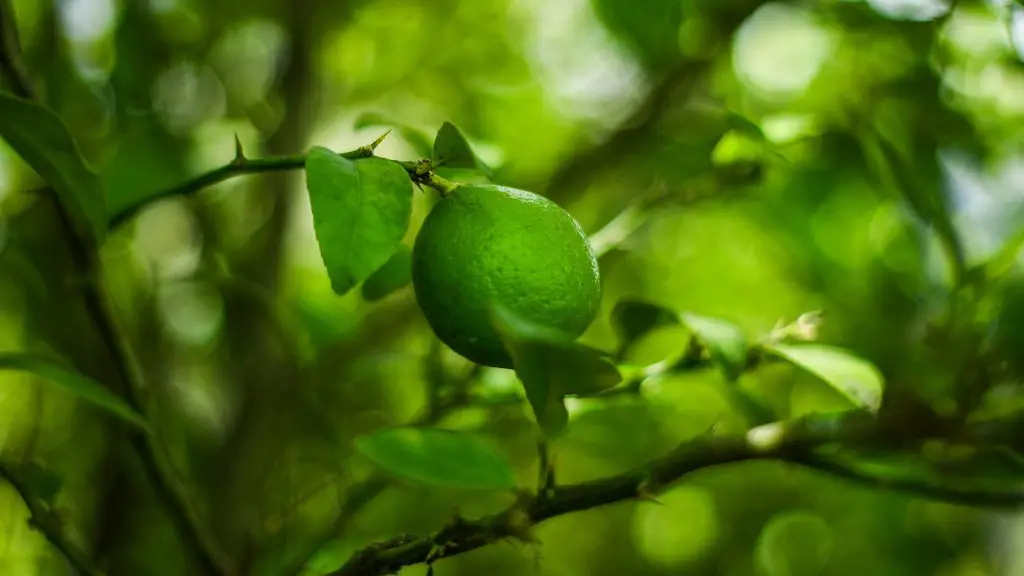If you love the fragrant scent of citrus and the tangy taste of lemons, then growing a Meyer Lemon Tree is a great way to get those flavors in your home. The Meyer Lemon is a hybrid of an orange and a lemon, producing large juicy fruit with a flavor that is sweeter than a traditional lemon. In this article, we’ll show you how to properly pot a Meyer Lemon Tree.
Prepare the Tree
Before you start planting, ensure you have the right pot and soil. Meyer Lemon Trees prefer an 8-10 inch diameter pot, with good drainage at the bottom. Select a soil that is more like a “soil-less” mixture, as pure soil can cling too tightly. Fill up 3/4 of the pot with soil and has a hole in the center. Place the Meyer Lemon Tree root ball in the hole of the pot and add more soil. Tap the soil gently around the tree and make sure there are no air pockets.
Watering Requirements
Meyer Lemon Trees prefer warm, humid temperatures and plenty of water. However, avoid overwatering, as this can damage the tree. Stick your finger in the soil up to the first joint. If it’s dry, it’s time to water. About once a week, water the Meyer Lemon Tree until the water starts to seep out the drainage holes at the bottom. The soil should be moist, but not overly wet.
Sun Requirements
Meyer Lemon Trees absolutely love full or partial sun. Place your pot in a sunny spot and rotate it every few days to help the tree get an even amount of sunlight. If you’re growing a tree indoors, make sure to place it close to a window to get enough sun.
Fertilizing the Tree
Fertilizing your tree will give it an extra boost of key vitamins and minerals it needs to thrive. Use a citrus fertilizer once a month, during the growing season. Start in late spring and end in early fall. However, be sure to not over-fertilize, as this can damage the roots and harm the tree.
How to Prune a Meyer Lemon Tree
When it comes to pruning Meyer Lemon Trees, it’s important to remember that their fast growth rate can lead to overgrown trees quickly, if you’re not careful. Prune the tree in mid-summer, after the growth spurt, to keep it from getting too big. Use sharp gardening shears to prune the branches and ensure you leave 1/4 to 1/3 of the branch length on the tree.
Harvesting and Storing Lemons
Meyer Lemons will be ripe for harvest for about 6-8 months. Start around mid-September and harvest until April. As soon as the lemons are ripe, pick and use them immediately or store them in the refrigerator. You can also freeze them, to enjoy all year round.
Protecting a Meyer Lemon Tree from Pests
Pests can be common on Meyer Lemon trees, so it’s important to take necessary precautions. Check your tree for pests and spots or fungus once a week and use insecticide if any pests or spots appear. If fungus does develop, use a fungicide to treat the tree.
How to Repot a Meyer Lemon Tree
As your Meyer Lemon Tree grows, you may need to repot it. Repot in the spring and choose a pot twice the size of the current one. Before repotting, inspect the tree carefully to check for pests or damage. If there are any, treat them with an insecticide or fungicide. Once you have treated the tree, remove it from the old pot and carefully place it into a new one. Fill up the new pot with soil, tapping it gently and repeat the steps outlined in the “Prepare the Tree” section.
Frost and Cold Protection for a Meyer Lemon Tree
Meyer Lemon Trees love warm climates, so if you live in an area that has cooler temperatures, you’ll need to take extra steps to protect your tree from the cold. Cover the tree with a blanket or tarp. If it’s too cold for the tree to handle, move the pot into a warm place like a shed, garage or even the house.
General Maintenance for a Meyer Lemon Tree
If you want to keep your Meyer Lemon Tree healthy, there are a few things you should keep in mind. Make sure you water it enough, provide it with plenty of sun, check it often for pests and fungus, and keep it pruned so that it doesn’t get overgrown. Additionally, use a citrus fertilizer to give it an extra boost of vitamins and minerals.


